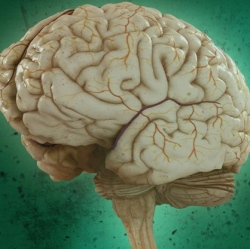
Neuroscientists in Italy and the U.K. have developed cognitive-stimulation exercises and tested them in a month-long experiment with healthy aging adults. The exercises were based on studies of the brain’s resting state, known as the “default mode network”* (DMN).
In a paper published in Brain Research Bulletin, the researchers explain that in aging (and at a pathological level in AD patients), the posterior (back) region of the DMN in the brain is underactive while the anterior (front) region is overactive. In addition, the two regions are not well connected in aging.
So as a proof of concept, working with screened and tested, mentally healthy adults over age 50, the researchers designed an experiment to improve cognitive connectivity in the posterior region and also between the anterior and posterior regions.
The intensive cognitive exercises were conducted over a period of up to 42 days using E-Prime 2.0 software from Psychology Software Tools. The computer-based exercises were chosen to be in the domains of “semantic processing, memory retrieval, logical reasoning, and executive processing,” the neuroscientists said, with “simultaneous activity in widespread neocortical, and mediotemporal and limbic areas” (the posterior component of the DMN). “Further exercises were then added to foster functional connectivity between anterior and posterior regions.”
An MRI protocol and a battery of neuropsychological tests were administered at baseline and at the end of the study.
The exercises were followed by fMRI exams. “Significant associations were found between task performance and gray-matter volume of multiple DMN core regions,” the authors note. “Functional regulation of resting-state connectivity within the posterior component of the DMN was found, “but no change in connectivity between the posterior and the anterior components. … These findings suggest that the program devised may have a preventive and therapeutic role in association with early AD-type neurodegeneration.”
